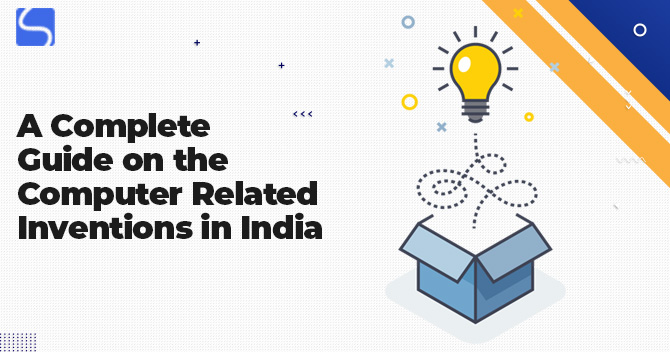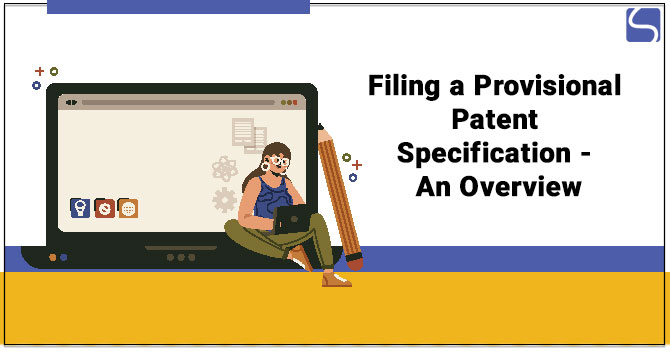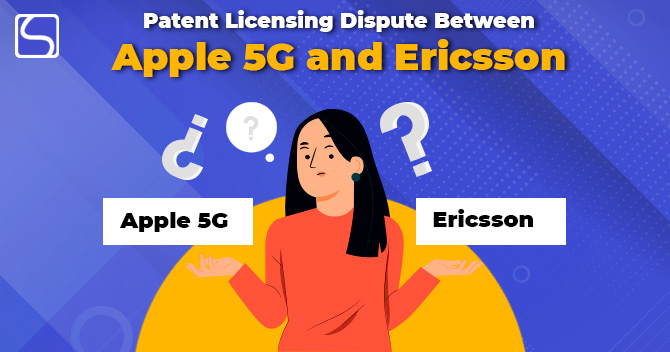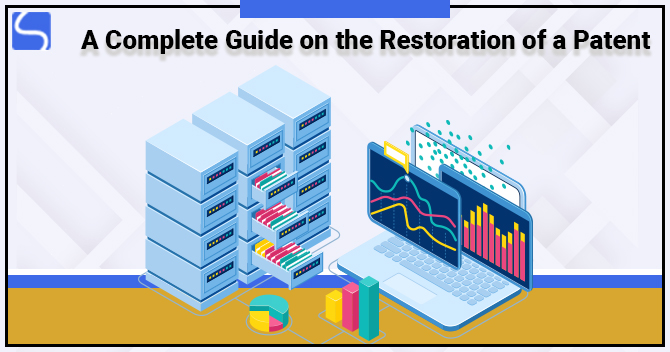A Complete Guide on the Computer Related Inventions in India

Karan Singh | Updated: May 03, 2021 | Category: Patent
In the previous few years, Information Technology (IT) has gained some special importance and advanced as an essential tool for scientific development. IT consists of the whole possibility of loading, communicating, storing, entering, recovering, and data management through the usage of computers and several other hardware, electronics, network, and telecommunication equipment. The Computer Related Inventions consist of the usage of the computer, programmable device, and computer networks. Moreover, the Computer Related Inventions (CRIs) in India also consists of such inventions that are having one or more features of which are followed partially or entirely by means of a computer programme.
The understanding of inventors in the field of CRIs has constantly attempted for appropriate protection of their IPR (Intellectual Property Rights). The scheme of Patent has to deal with the processing challenges of the applications of Patents related to computer inventions and other technologies. Most of the Patent Offices around the globe have to confront the issue regarding the patentability of CIRs. They have deposited several examination guidelines or manuals to examine the applications for Patent Registration from the technology field so that the nations can succeed in uniform examination practices. Scroll down to check more information regarding Computer Related Inventions in India.
Table of Contents
An Overview of Computer Related Invention
In recent years, the Office of the Controller General of Patents, Trademarks, and Designs has issued some sets of regulations for understanding and interpreting the objective of CRIs and their security in India. The guidelines for the examination of CIRs (Computer Related Inventions) were issued by the Patents Office on June 30, 2017. The guidelines issued by the Patents Office were 1st published in Aug 2015; however, due to very robust resistance from inventors, the guidelines were put in pending. After this, the guidelines were reissued in Feb 2016. However, the resistance of inventors continued and eventually, the matter was delivered to an expert committee by the Ministry of Commerce and Industry in India for proving expert references for the same.
According to the guidelines issued by the Patents Office for the examinations of Computer Related Inventions, the inventions must involve the following things:
- The use of computers;
- The computer network;
- Other programmable devices or apparatus;
- Inventions with more than one features that are understood partly or completely by means of a computer programme.
Basic Necessities to Conclude the Patentability of Computer Related Inventions
For a Patent Registration for an Invention, a CRI should fulfil the following criteria:

Uniqueness of Invention
A unique invention means any technology or invention that has not been estimated by any publication in any document or is being used in the nation or anywhere else in the globe before the Patent Registration application filing date with full specification. Therefore, it can be said that the matter of the invention regarding computers has not come under the public domain or doesn’t form a part of the art state.
Industrial Suitability of Invention
An invention should be suitable for industrial application. The industrial application related to Computer Related Inventions means that the Computer Related Inventions must be proficient in being used or made in the industry. The invention must have workability and usefulness in industrial applications to become qualified for the Patent Registration.
Competence of Disclosure
The requirement of “What” the invention is all about and “How” the invention will perform should always be satisfied in the provisions of the invention. To fulfil the vital necessities of the Patent Act, 1970, the complete disclosure of the provisions of the invention must be done. The explanation of the invention made in the provisions should be clear, correct, unmistakable, and precise.
Creative Step of Invention
A creative step of CIRs means a feature of an invention that comprise a technical advancement as compared to the fundamental knowledge or having some financial significance or both, and therefore, this doesn’t make the invention regarding the computer not obvious to any individual skilled or expert in the art.
In India, the Supreme Court[1], in the case of Hindustan Metal Industries Ltd. vs Biswanath Prasad Radhey Shyam (AIR 1982 SC 1444), which is related to creative step, definite the following steps to accurately judge to define by looking at the complete invention that whether a creative step is there in the invention or not;
- The identification of a skilled person that is an engineer or craftsman is experienced and is distinguishable from being a mere artisan.
- The identification of the noteworthy general knowledge of the individual at the priority date;
- The identification of the creative idea of the claim, which is in question or if that cannot be done willingly, interpret it;
- The identification of what differences exist between the matters referred to as starting part of the “State of the Art” and the creative idea of the claim.
What is not Patentable under the Computer Related Inventions in India?
According to the guidelines issued by the Patents Office in India, the below mentioned things are excluded from Patentability under CRIs:
1. Claims directed as Mathematical Method:
- Certain mathematical methods such as a method of calculation, formulation of equations, finding roots of various numbers and all other identical acts of knowledgeable skills;
- Simple manipulations of a knowledgeable thought or solving a mathematical problem without instructing a practical application of it.
- The following methods don’t come under elimination:
- Encoding;
- The lessening of noise in electrical, electronic or communication systems;
- The decrypting/encrypting electronics.
2. Claim focused as Business Method:
- Any claims not drafted as “Business Method” but dishonestly with some indefinite means;
- When the claim is “Business Methods” in its substance;
- Simply the existence of words such as commerce, business rules, transactions, supply chain, enterprise, etc. in the claims will not lead to the assumption of an inventor or creation for being just a “Business Method”;
- The matter of the invention is usually regarding performing business, trade, transaction, monetary activity, or a method of selling and buying of goods through the internet must be treated as business methods and must not be patentable.
3. A claim directed as Algorithm:
- A set of rules, procedures, or any other order of steps;
- Any method stated by way of a fixed list of definite instructions, whether for solving any problem;
- Whether employing a logical, mathematical, or computational method, recursive or otherwise.
4. Claims directed as Computer Programme:
- A certain set of instructions;
- Database;
- The subroutines and routines;
- The products of a computer programme;
- Some storage of medium having instructions;
- Computer programmes;
- The computer memory with some directions stored in a computer-readable medium.
5. A claim directed as an illustration of information:
Any method or means of expressing or stating information, whether tangible, visual, or audible by words, codes, symbols, signals, or any mode of demonstration available.
6. A claim directed at the geography of integrated circuits:
3-D configuration of the electronic circuits used in microchips & semi-conductor chips.
7. A claim directed as a rule or method of performing a mental act or method of playing a game:
According to the procedures of chapter 08.03.05.12 in the Patent Manual, the claims under this chapter consists of:
- A regime of performing the mental act;
- A rule or way of playing the game.
For instance, method or paying chess or learning or teaching.
8. A claim directed as a musical, literary, dramatic or artistic works or any other creation consisting of cinematographic works and television productions:
- Music, paintings, sculptures;
- Computer programmes, electronic databases;
- 3-D works regarding topography, geography;
- Music arrangements, translations, multimedia productions, etc.
- Books, lectures, applied art, sermons, etc.;
- Choreographic works, musical works, dramatic works, etc.
Conclusion
Patent protection is a familiar means of assisting inventions, developing living standards, and enhance the nation’s employment. As the economy is becoming digitized worldwide at a very rapid speed and also increasing competition in the market, there is a need to announce Patent protection in the condition of Computer Related Inventions in a nation. The primary objective of Patent Registration is to permit the innovators to have dedicated resources for software advancement. Therefore, to increase the complete growth, the provisions related to the patentability of Computer Related Inventions were presented in India.
Read our article:An Overview of Patent Term Extension














